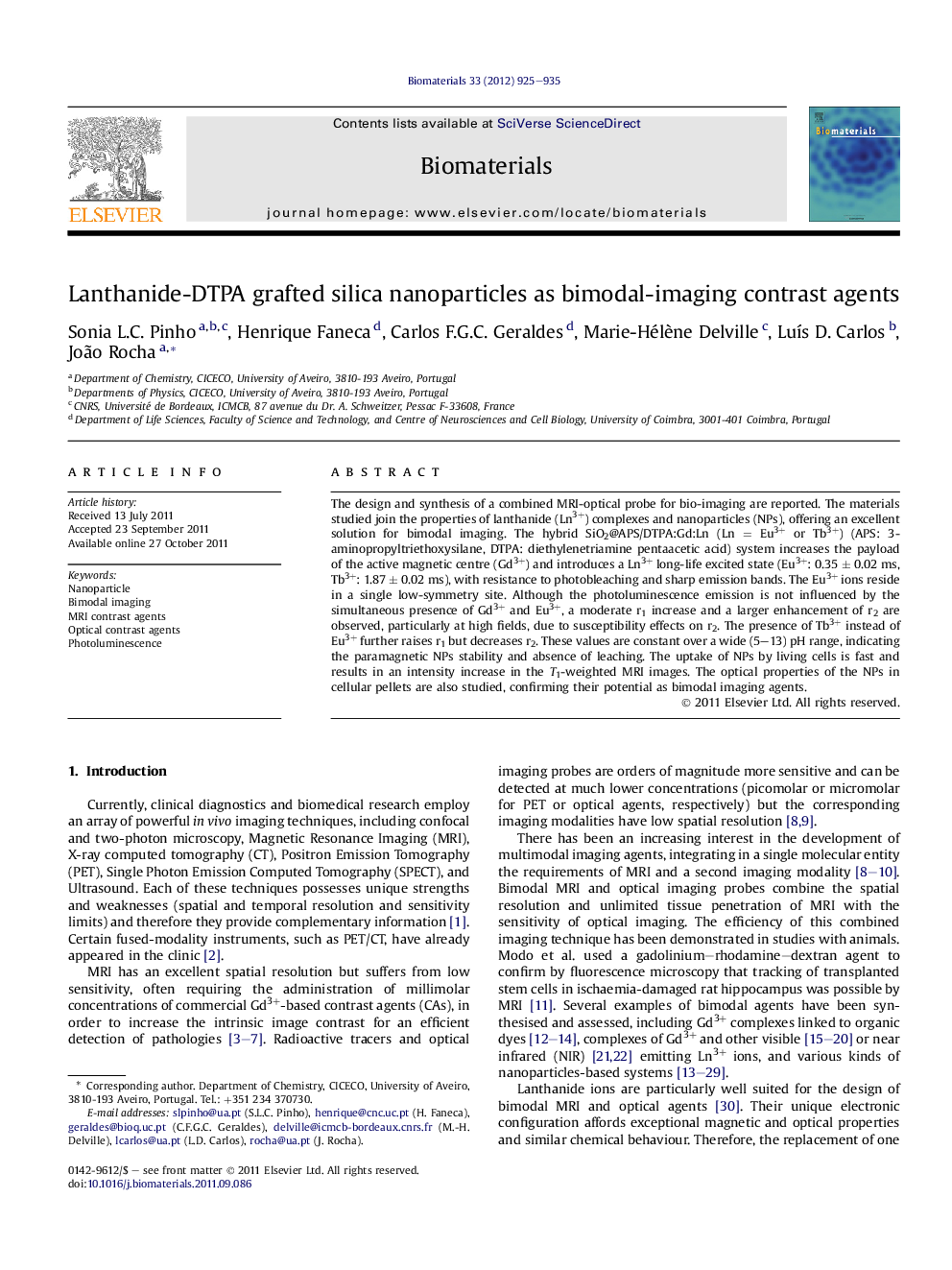| Article ID | Journal | Published Year | Pages | File Type |
|---|---|---|---|---|
| 7058 | Biomaterials | 2012 | 11 Pages |
The design and synthesis of a combined MRI-optical probe for bio-imaging are reported. The materials studied join the properties of lanthanide (Ln3+) complexes and nanoparticles (NPs), offering an excellent solution for bimodal imaging. The hybrid SiO2@APS/DTPA:Gd:Ln (Ln = Eu3+ or Tb3+) (APS: 3-aminopropyltriethoxysilane, DTPA: diethylenetriamine pentaacetic acid) system increases the payload of the active magnetic centre (Gd3+) and introduces a Ln3+ long-life excited state (Eu3+: 0.35 ± 0.02 ms, Tb3+: 1.87 ± 0.02 ms), with resistance to photobleaching and sharp emission bands. The Eu3+ ions reside in a single low-symmetry site. Although the photoluminescence emission is not influenced by the simultaneous presence of Gd3+ and Eu3+, a moderate r1 increase and a larger enhancement of r2 are observed, particularly at high fields, due to susceptibility effects on r2. The presence of Tb3+ instead of Eu3+ further raises r1 but decreases r2. These values are constant over a wide (5–13) pH range, indicating the paramagnetic NPs stability and absence of leaching. The uptake of NPs by living cells is fast and results in an intensity increase in the T1-weighted MRI images. The optical properties of the NPs in cellular pellets are also studied, confirming their potential as bimodal imaging agents.
